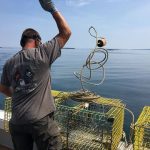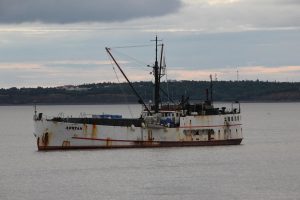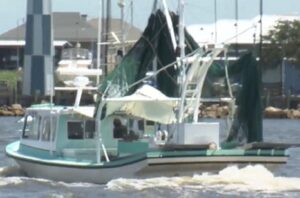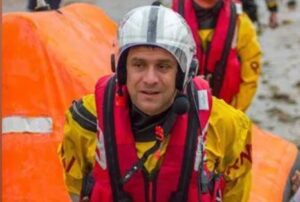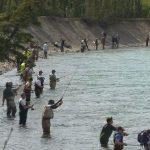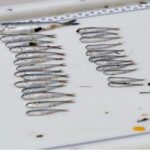Daily Archives: May 4, 2016
Global Recall on Kannad SAFELINK EPIRBs
 U.S. Coast Guard issued an urgent marine safety alert for shipowners and operators announcing the recall of certain Kannad SAFELINK brand Emergency Position Indicating Radio Beacons (EPIRBs). The devices have a yellow plastic body, which may age prematurely when subjected to “specific environmental conditions,” which could result in the beacon not operating in an emergency, the USCG said. The Coast Guard strongly encouraged operators to check their Kannad-branded EPIRB against an online serial number list to determine whether it was among the models affected. The product number can be found on the back of the EPIRB, and entered at http://www.safelinkepirbsupport.co.uk Read the rest here 20:56
U.S. Coast Guard issued an urgent marine safety alert for shipowners and operators announcing the recall of certain Kannad SAFELINK brand Emergency Position Indicating Radio Beacons (EPIRBs). The devices have a yellow plastic body, which may age prematurely when subjected to “specific environmental conditions,” which could result in the beacon not operating in an emergency, the USCG said. The Coast Guard strongly encouraged operators to check their Kannad-branded EPIRB against an online serial number list to determine whether it was among the models affected. The product number can be found on the back of the EPIRB, and entered at http://www.safelinkepirbsupport.co.uk Read the rest here 20:56
Bill Karp, Director of Northeast Fisheries Science Center is retiring
 The head of NOAA Fisheries’ Northeast Fisheries Science Center in Woods Hole has announced his retirement in September from federal service after just under four years as head of the center. Bill Karp came to Cape Cod after serving many years in the Alaska Fisheries Science Center, and has 30 years of fisheries research experience. The science centers conduct most of the fisheries research regulators then use to set policies and quotas, and is often in the middle of sharp disagreements between researchers and the commercial fishing industry. Karp is a regular presence at the marathon New England Fisheries Management Council’s meetings. Karp wrote in a retirement announcement that he was honored to have been selected for the position on the Cape and enjoyed working with dedicated and accomplished staff. Read the rest here 19:29
The head of NOAA Fisheries’ Northeast Fisheries Science Center in Woods Hole has announced his retirement in September from federal service after just under four years as head of the center. Bill Karp came to Cape Cod after serving many years in the Alaska Fisheries Science Center, and has 30 years of fisheries research experience. The science centers conduct most of the fisheries research regulators then use to set policies and quotas, and is often in the middle of sharp disagreements between researchers and the commercial fishing industry. Karp is a regular presence at the marathon New England Fisheries Management Council’s meetings. Karp wrote in a retirement announcement that he was honored to have been selected for the position on the Cape and enjoyed working with dedicated and accomplished staff. Read the rest here 19:29
McDowell Group Report outlines economics of Kodiak Island’s seafood industry. Jobs=38%
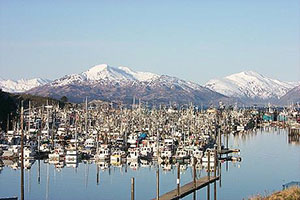 Kodiak is grappling with how new ways of managing groundfish might affect the island’s economy. Plans being crafted now affect catches of up to 25 different fish species – which together made up 83 percent of all Kodiak landings in 2014. To provide some guidance, a new economic impact report breaks down how the entire seafood industry plays out throughout the Kodiak Island borough, which includes six outlying villages for a total population of 14,000 residents. The draft report done by the McDowell Group gives a 10 year snapshot starting in 2005, covering all the local actions it takes to be a seafood powerhouse year after year. Nearly 500 million pounds of seafood worth $150 million to fishermen was delivered to Kodiak Island in 2014. Read the rest here 18:08
Kodiak is grappling with how new ways of managing groundfish might affect the island’s economy. Plans being crafted now affect catches of up to 25 different fish species – which together made up 83 percent of all Kodiak landings in 2014. To provide some guidance, a new economic impact report breaks down how the entire seafood industry plays out throughout the Kodiak Island borough, which includes six outlying villages for a total population of 14,000 residents. The draft report done by the McDowell Group gives a 10 year snapshot starting in 2005, covering all the local actions it takes to be a seafood powerhouse year after year. Nearly 500 million pounds of seafood worth $150 million to fishermen was delivered to Kodiak Island in 2014. Read the rest here 18:08
Coast Guard medevacs Fisherman off Gloucester coast
 A Coast Guard crew medevaced a 47-year-old fisherman Wednesday off the coast of Gloucester. Watchstanders at Sector Boston’s command center received the report at approximately 11:40 a.m. from a crew member aboard the commercial fishing vessel, First Impression II, homeported in Sorrento, Maine, that another crew member was suffering from chest pains. A 29-foot response boat from Station Gloucester arrived on scene first at 11:59 a.m. A crew followed quickly behind with Gloucester Fire Department emergency medical technicians aboard and arrived on scene at 12:03 p.m. The EMTs boarded the First Impression II to give the patient medical attention, and the Coast Guard escorted the vessel back to Station Gloucester. First Impression II moored at 12:20 p.m., and emergency medical services personnel transported the man to Addison Gilbert Hospital in Gloucester, Massachusetts. Link 16:16
A Coast Guard crew medevaced a 47-year-old fisherman Wednesday off the coast of Gloucester. Watchstanders at Sector Boston’s command center received the report at approximately 11:40 a.m. from a crew member aboard the commercial fishing vessel, First Impression II, homeported in Sorrento, Maine, that another crew member was suffering from chest pains. A 29-foot response boat from Station Gloucester arrived on scene first at 11:59 a.m. A crew followed quickly behind with Gloucester Fire Department emergency medical technicians aboard and arrived on scene at 12:03 p.m. The EMTs boarded the First Impression II to give the patient medical attention, and the Coast Guard escorted the vessel back to Station Gloucester. First Impression II moored at 12:20 p.m., and emergency medical services personnel transported the man to Addison Gilbert Hospital in Gloucester, Massachusetts. Link 16:16
‘Wicked Tuna’ captain Jessie Anderson quits Wicked Tuna reality show
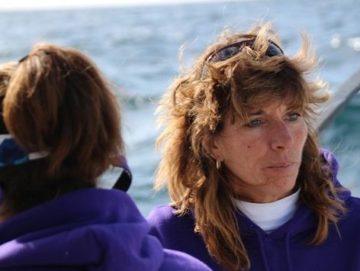 Fishing captain Myjestic “Jessie” Anderson, part of the all-women crew on the National Geographic Channel’s hit documentary series, Wicked Tuna – Outer Banks, will not be on the reality show when it airs this summer. Anderson decided to focus on the charter fishing business aboard her boat Carolina Girl out of Hatteras Harbor, she said Wednesday. “I do better fishing on my own,” she said. Anderson did not take part in the filming of season three from January to March. The boat Reel Action will also not be part of the third season, Anderson said. Read the rest here 15:47
Fishing captain Myjestic “Jessie” Anderson, part of the all-women crew on the National Geographic Channel’s hit documentary series, Wicked Tuna – Outer Banks, will not be on the reality show when it airs this summer. Anderson decided to focus on the charter fishing business aboard her boat Carolina Girl out of Hatteras Harbor, she said Wednesday. “I do better fishing on my own,” she said. Anderson did not take part in the filming of season three from January to March. The boat Reel Action will also not be part of the third season, Anderson said. Read the rest here 15:47
Thousands of Chilean fishermen protest low compensation as Deadly Red Tide Blooms in Southern Chile
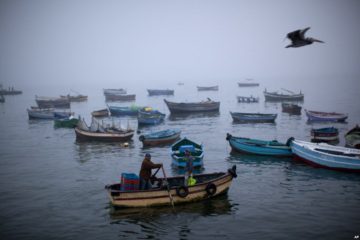 Thousands of Chilean fishermen blocked roads with barricades in the region of Los Lagos on Monday and Tuesday, saying government efforts to mitigate the economic effects of a harmful algal bloom have been insufficient. For the last four weeks, the southern-central region of Los Lagos has been plagued by what scientists say is the biggest “red tide” in its history. The red tide – an algal bloom that turns the sea water red – is a common, naturally recurring phenomenon in southern Chile, though the extent of the current outbreak is unprecedented. The government has offered to pay each affected family 100,000 pesos ($151) each in compensation, an amount fishermen have widely rejected as insufficient. Read the rest here 14:44
Thousands of Chilean fishermen blocked roads with barricades in the region of Los Lagos on Monday and Tuesday, saying government efforts to mitigate the economic effects of a harmful algal bloom have been insufficient. For the last four weeks, the southern-central region of Los Lagos has been plagued by what scientists say is the biggest “red tide” in its history. The red tide – an algal bloom that turns the sea water red – is a common, naturally recurring phenomenon in southern Chile, though the extent of the current outbreak is unprecedented. The government has offered to pay each affected family 100,000 pesos ($151) each in compensation, an amount fishermen have widely rejected as insufficient. Read the rest here 14:44
Athearn Marine Agency Boat of the Week: 42′ Wood Lobster boat, 250HP, 8 Cylinder Detroit 871
Specifications, information and 13 photos click here To see all the boats in this series, Click here 11:56
Letter: Lobster decline’s link to warmth not clear
 On Saturday, The Bulletin presented an article, “Research supports blaming warmer waters for lobster decline,” which was somewhat confusing. On my weekly visits to the local markets, large marine seawater aquariums are typical and usually overfilled with lobsters with frequent sales available, indicating little or no decline noticeable for the popular lobster. These are animals typical marine bottom-feeders living in cold bottom water temperatures, characteristic of the marine environment. The article reports that the populations in New England waters are booming. The temperature typical of the lobster environment was not reported, and therefore one can only assume that bottom water temperature has not changed significantly and probably is not a factor in the lobster environment. Without the temperature data available, it is hard to understand the suggestion concerning lobster decline in the article. Many of these types of presentations appear to be based on emotion and not on the scientific data. DONALD E. LEONE SR. Norwich link 11:19
On Saturday, The Bulletin presented an article, “Research supports blaming warmer waters for lobster decline,” which was somewhat confusing. On my weekly visits to the local markets, large marine seawater aquariums are typical and usually overfilled with lobsters with frequent sales available, indicating little or no decline noticeable for the popular lobster. These are animals typical marine bottom-feeders living in cold bottom water temperatures, characteristic of the marine environment. The article reports that the populations in New England waters are booming. The temperature typical of the lobster environment was not reported, and therefore one can only assume that bottom water temperature has not changed significantly and probably is not a factor in the lobster environment. Without the temperature data available, it is hard to understand the suggestion concerning lobster decline in the article. Many of these types of presentations appear to be based on emotion and not on the scientific data. DONALD E. LEONE SR. Norwich link 11:19
N.J. rec fisherman “Johnny Bucktail” faces wave of anger after fish tossing video goes viral
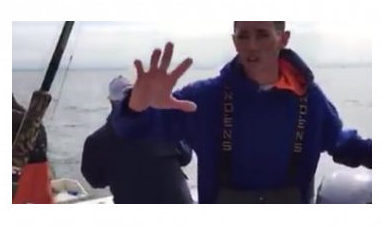 A Monmouth County fisherman is facing a firestorm of criticism — mostly from fellow fishermen — for a video he posted online showing him tossing numerous motionless fish overboard. The video, posted Monday to Facebook and Youtube and which you can see above, shows John Contello of Hazlet on board his father’s 37-foot Sea Hunter boasting of the number of striped bass being caught as he looks down on a pile of fish in the back of his boat. He then proceeds to throw two of them through the air and back into the water. Commenters attacked like sharks. Video, read the rest here 10:41
A Monmouth County fisherman is facing a firestorm of criticism — mostly from fellow fishermen — for a video he posted online showing him tossing numerous motionless fish overboard. The video, posted Monday to Facebook and Youtube and which you can see above, shows John Contello of Hazlet on board his father’s 37-foot Sea Hunter boasting of the number of striped bass being caught as he looks down on a pile of fish in the back of his boat. He then proceeds to throw two of them through the air and back into the water. Commenters attacked like sharks. Video, read the rest here 10:41
Last In, First Out review sees duelling public campaigns by inshore and offshore shrimp harvesters
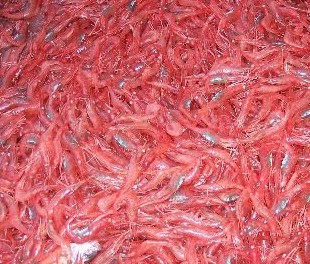 The Department of Fisheries and Oceans will review the Last In, First Out (LIFO) policy for the northern shrimp fishery and that has two groups of harvesters launching two very different public campaigns. Earlier this year the federal government announced it would temporarily suspend the controversial policy. Some fishermen fear a review will work against the smaller inshore boats as they were the last to enter the fishery. In an attempt to win favour by tugging on the hearts and minds of people in this province, both inshore and offshore supporters have released videos. Watch the competing videos here 09:16
The Department of Fisheries and Oceans will review the Last In, First Out (LIFO) policy for the northern shrimp fishery and that has two groups of harvesters launching two very different public campaigns. Earlier this year the federal government announced it would temporarily suspend the controversial policy. Some fishermen fear a review will work against the smaller inshore boats as they were the last to enter the fishery. In an attempt to win favour by tugging on the hearts and minds of people in this province, both inshore and offshore supporters have released videos. Watch the competing videos here 09:16
Saving the Salmon – 38 sea lions killed near Bonneville Dam this year
 Wildlife workers from Oregon and Washington have killed 38 California sea lions at Bonneville Dam this year. That’s the most in any single year since getting approval from NMFS in 2008. NOAA spokesman Michael Milstein says it appears the program is working. “These are the fish that a lot of people are working really hard to save by improving habitat and making improvements at the dam and we don’t want to lose ground by having them be eaten by sea lions on their way back to spawn,” he said. The authorization to kill the animals runs out in June of 2016. Oregon and Washington have asked for another five years. NMFS is expected to decide in June or July. Video Read the rest here 08:09
Wildlife workers from Oregon and Washington have killed 38 California sea lions at Bonneville Dam this year. That’s the most in any single year since getting approval from NMFS in 2008. NOAA spokesman Michael Milstein says it appears the program is working. “These are the fish that a lot of people are working really hard to save by improving habitat and making improvements at the dam and we don’t want to lose ground by having them be eaten by sea lions on their way back to spawn,” he said. The authorization to kill the animals runs out in June of 2016. Oregon and Washington have asked for another five years. NMFS is expected to decide in June or July. Video Read the rest here 08:09


































